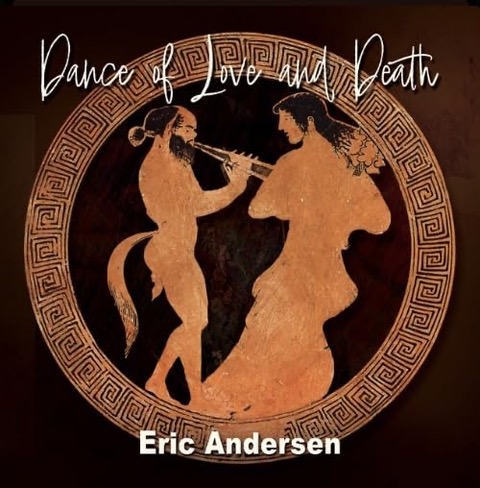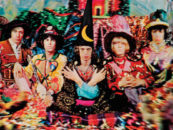 For whatever reason, folk singer/songwriter Eric Andersen is probably still best known for such self-penned classics as “Thirsty Boots,” “Close the Door Lightly When You Go,” and “Violets of Dawn,” all of which appeared on his 1966 sophomore album, ’Bout Changes ’n’ Things. Those are great songs, but Andersen crafted many more standout recordings in the years and decades that followed, including numbers on albums like Blue River (1972), Be True to You (1975), Ghosts Upon the Road (1989) and You Can’t Relive the Past (2000).
For whatever reason, folk singer/songwriter Eric Andersen is probably still best known for such self-penned classics as “Thirsty Boots,” “Close the Door Lightly When You Go,” and “Violets of Dawn,” all of which appeared on his 1966 sophomore album, ’Bout Changes ’n’ Things. Those are great songs, but Andersen crafted many more standout recordings in the years and decades that followed, including numbers on albums like Blue River (1972), Be True to You (1975), Ghosts Upon the Road (1989) and You Can’t Relive the Past (2000).
More recently, the now 82-year-old singer has released albums that draw on the works of writers Albert Camus, Heinrich Boll and Lord Byron. He has also served up several live albums, including the terrific three-CD Woodstock Under the Stars (2020). Compared with earlier years, however, he has offered little in the way of original new material during the past two decades.
Related: Andersen was popular in the Greenwich Village ’60s folk scene
Until now, that is. Andersen has just released Dance of Love and Death, and it’s a two-disc set featuring nearly an hour and a half’s worth of music. He wrote all its songs except “Cross of Gold,” which is by Grammy-winning singer/songwriter Robin Batteau (who plays violin and classical guitar on the number). Versions of four of the other tunes have appeared on concert LPs and another two surfaced on digital albums, but none of the remaining songs have been previously released in any form.
Andersen is at the top of his form on every one of the April 2025 collection’s 17 tracks, all of which feature his distinctive, intimate vocals and immersive, elegantly constructed music. As usual, many of Andersen’s most powerful lyrics—such as those in “Sinking Deeper into You” and “Map of a Woman’s Heart”—explore topics related to romantic love. But he also turns his eye in other directions here. “Singin’ Man,” for example, tips a hat to buskers and appears to limn Andersen’s own early days in the music world. And in “After This Life,” he offers a lighthearted bucket list for his time in the hereafter that would fit well alongside John Prine’s “When I Get to Heaven.”
Longtime associate Steve Addabbo, who has played key roles on other Andersen albums and produced or mixed LPs by artists such as Bob Dylan, Richard Shindell and Suzanne Vega, produced the set. Andersen plays guitar, piano and occasional harmonica, and is joined by more than a dozen other musicians, among them Patti Smith guitarist Lenny Kaye, Bob Dylan bassist Tony Garnier and multi-instrumentalists Addabbo and Larry Campbell. Andersen’s wife Inga, to whom the album is dedicated, adds harmony vocals on several tracks and duets with her husband on an affecting number called “At the End of the Day.” Several band members play string instruments—violin, viola and cello—that fit well with the set’s fervent lyrics and vocals.
Andersen has been serving up poignant, powerful music for six decades now. Dance of Love and Death leaves no doubt that he can still deliver.
Dance of Love and Death is available in the U.S. here and in the U.K. here.






1 Comment so far
Jump into a conversationI think the new collection is great. I knew some of the songs from live versions, but this is a very welcome addition to what is truly a very impressive body of work by Eric.